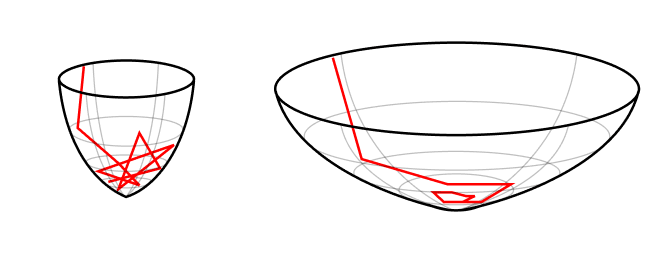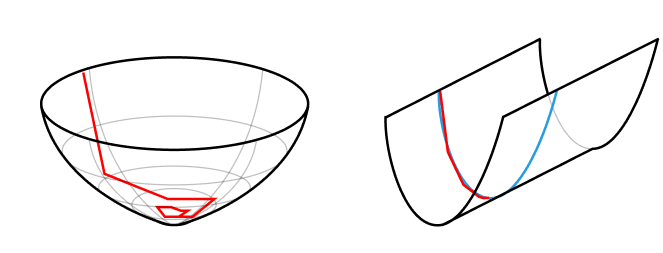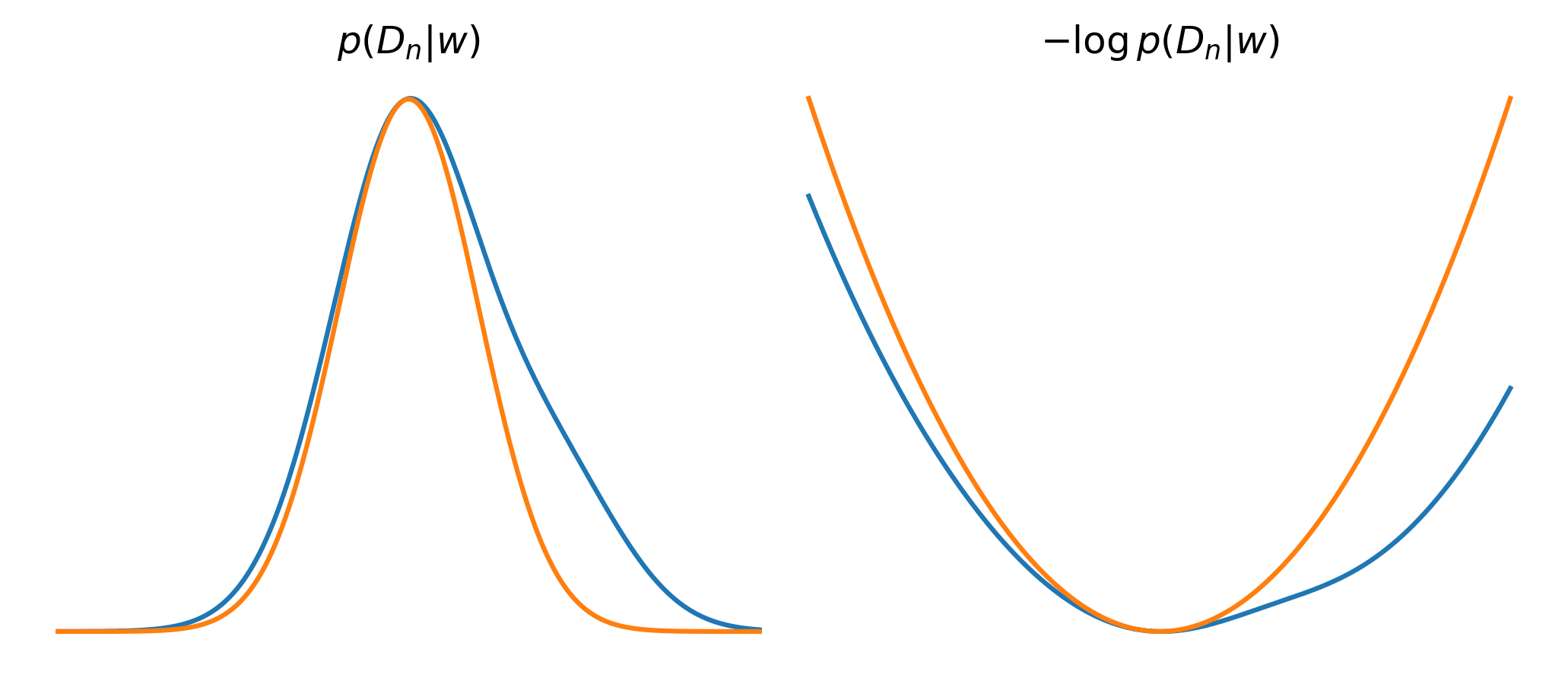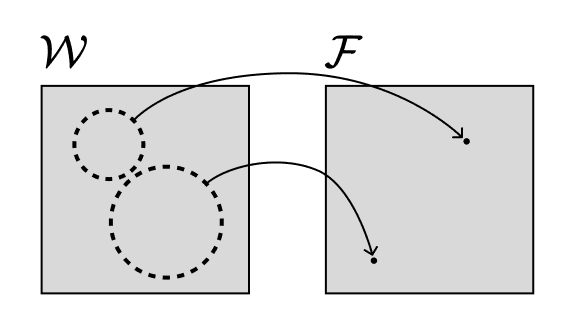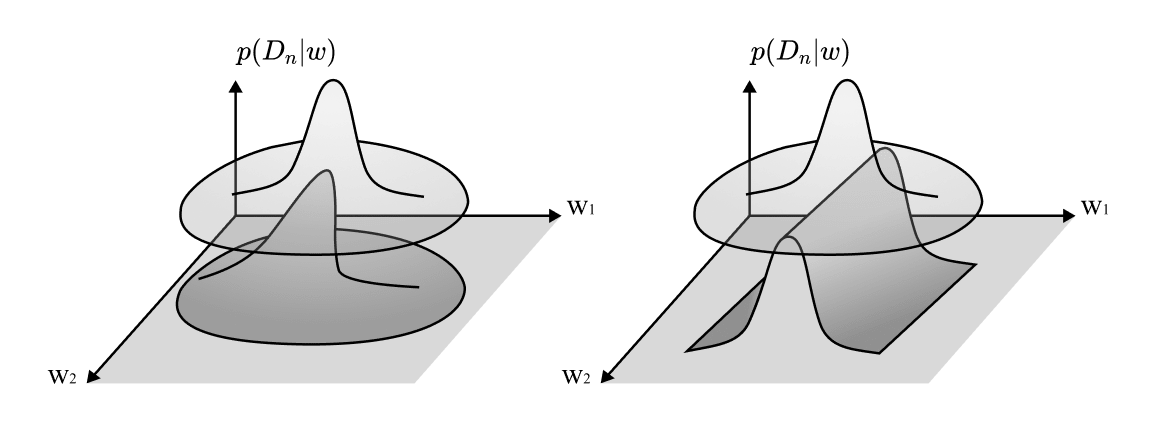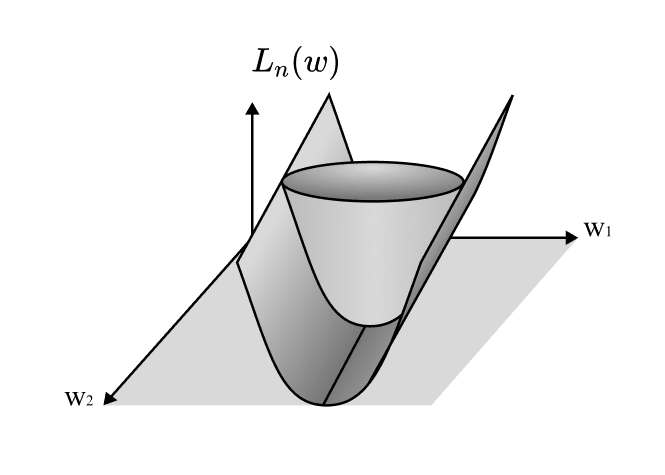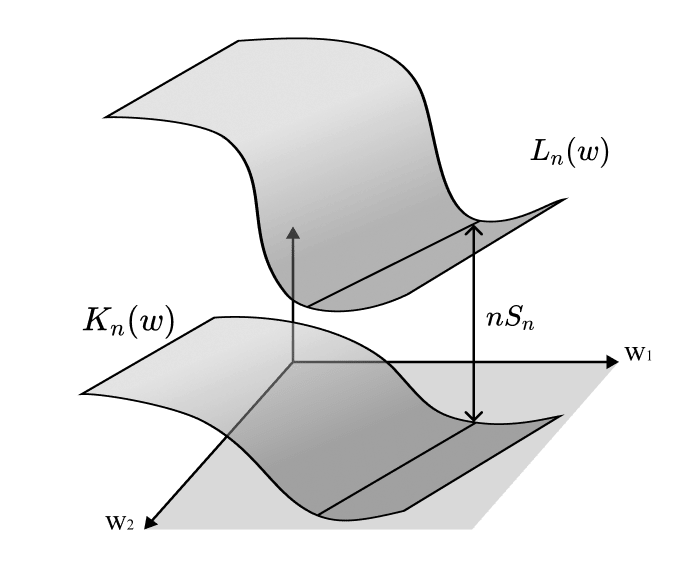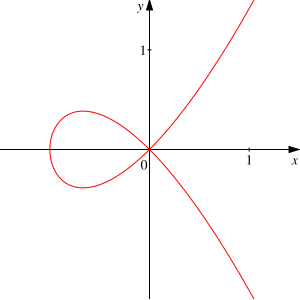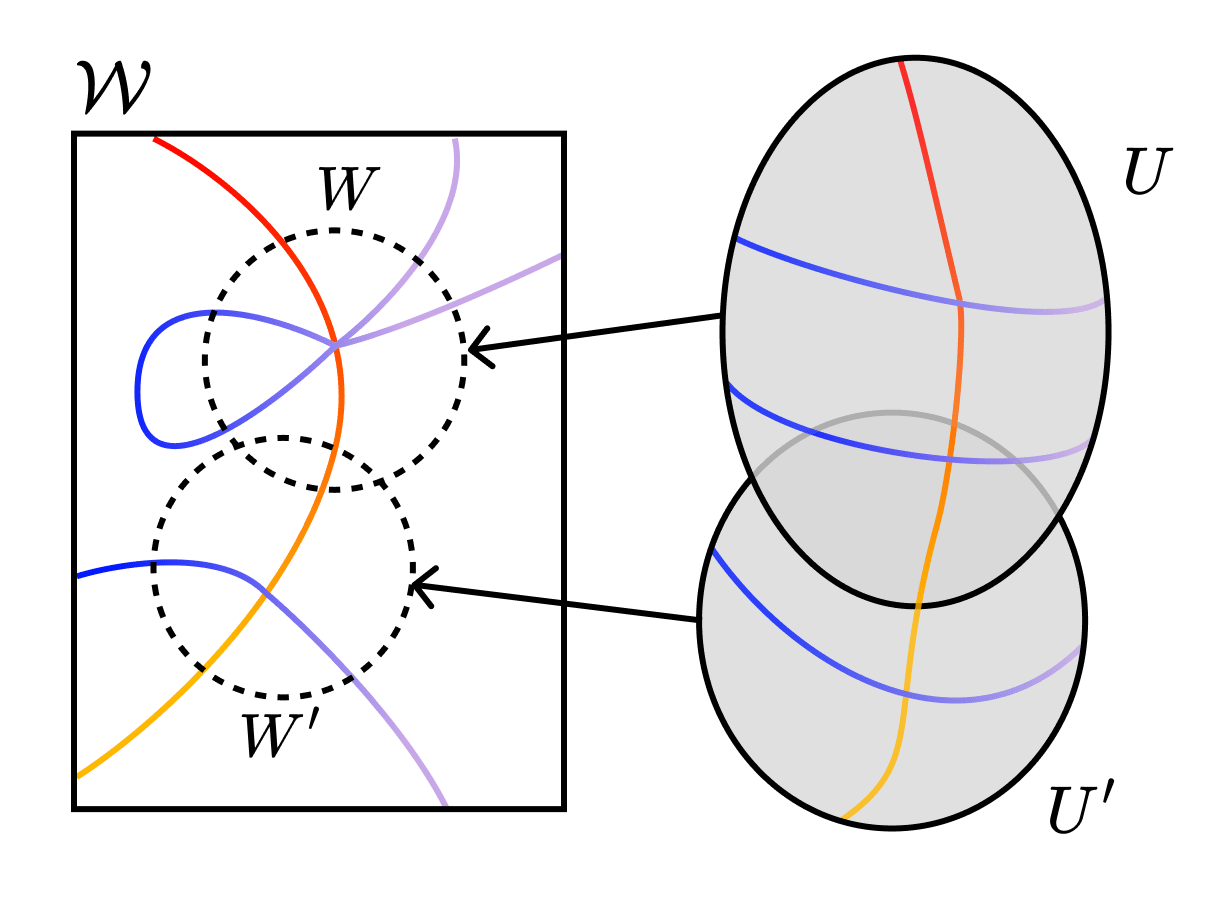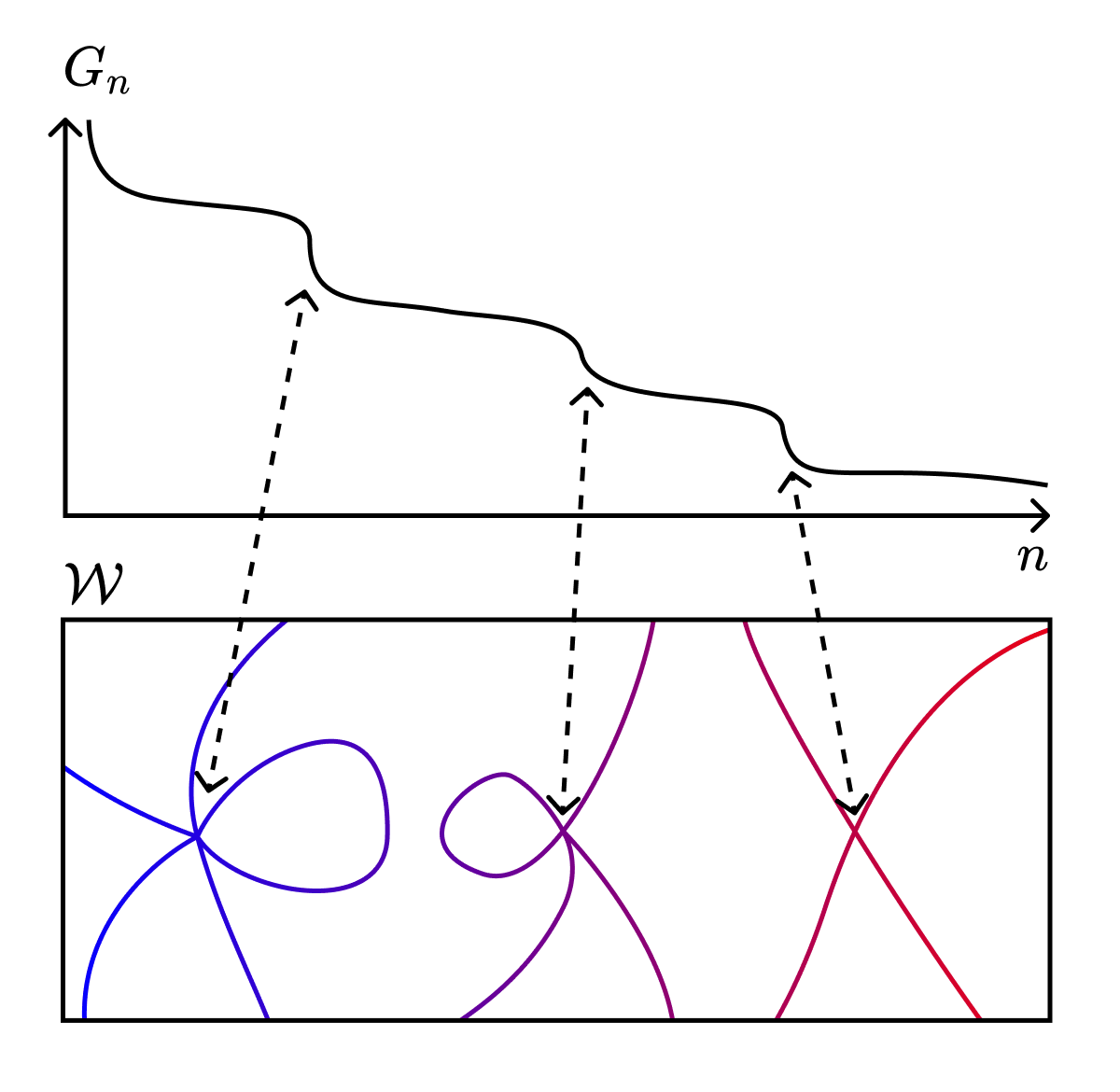
Neural networks generalize because of this one weird trick
12Vanessa Kosoy
9Adrià Garriga-alonso
4Jesse Hoogland
8Jesse Hoogland
7Frank Seidl
4Jesse Hoogland
3Vinayak Pathak
3Jesse Hoogland
3Vinayak Pathak
7Garrett Baker
3Lucius Bushnaq
3Jesse Hoogland
3Leon Lang
3tgb
6Jesse Hoogland
2tgb
2Jesse Hoogland
2tgb
2Jesse Hoogland
2tgb
1Jesse Hoogland
3Jonathan_Graehl
7Jesse Hoogland
2Ulisse Mini
1Jesse Hoogland
2Jonathan_Graehl
1Jesse Hoogland
1Review Bot
1Review Bot
1RiversHaveWings
1Jesse Hoogland
1ai dan
2Jesse Hoogland
1Algon
3Jesse Hoogland
New Comment
This post is a solid introduction to the application of Singular Learning Theory to generalization in deep learning. This is a topic that I believe to be quite important.
One nitpick: The OP says that it "seems unimportant" that ReLU networks are not analytic. I'm not so sure. On the one hand, yes, we can apply SLT to (say) GELU networks instead. But GELUs seem mathematically more complicated, which probably translates to extra difficulties in computing the RLCT and hence makes applying SLT harder. Alternatively, we can consider a series of analytical response functions that converges to ReLU, but that probably also comes with extra complexity. Also, ReLU have an additional symmetry (the scaling symmetry mentioned in the OP) and SLT kinda thrives on symmetries, so throwing that out might be bad!
It seems to me like a fascinating possibility that there is some kind of tropical geometry version of SLT which would allow analyzing generalization in ReLU networks directly and perhaps somewhat more easily. But, at this point it's merely a wild speculation of mine.
First of all, I really like the images, they made things easier to understand and are pretty. Good work with that!
My biggest problem with this is the unclear applicability of this to alignment. Why do we want to predict scaling laws? Doesn't that mostly promote AI capabilities, and not alignment very much?
Second, I feel like there's a confusion over several probability distributions and potential functions going on
- The singularities are those of the likelihood ratio
- We care about the generalization error with respect to some prior , but the latter doesn't have any effect on the dynamics of SGD or on what the singularity is
- The Watanabe limit ( as ) and the restricted free energy all are presented on results, which rely on the singularities, and somehow predict generalization. But all of these depend on the prior , and earlier we've defined the singularities to be of the likelihood function; plus SGD actually only uses the likelihood function for its dynamics.
What is going on here?
It's also unclear what the takeaway from this post is. How can we predict generalization or dynamics from these things? Are there any empirical results on this?
Some clarifying questions / possible mistakes:
is not a KL divergence, the terms of the sum should be multiplied by or .
the Hamiltonian is a random process given by the log likelihood ratio function
Also given by the prior, if we go by the equation just above that. Also where does "ratio" come from? Likelihood ratios we can find in the Metropolis-Hastings transition probabilities, but you didn't even mention that here. I'm confused.
But that just gives us the KL divergence.
I'm not sure where you get this. Is it from the fact that predicting p(x | w) = q(x) is optimal, because the actual probability of a data point is q(x) ? If not it'd be nice to specify.
the minima of the term in the exponent, K (w) , are equal to 0.
This is only true for the global minima, but for the dynamics of learning we also care about local minima (that may be higher than 0). Are we implicitly assuming that most local minima are also global? Is this true of actual NNs?
the asymptotic form of the free energy as
This is only true when the weights are close to the singularity right? Also what is , seems like it's the RLCT but this isn't stated
First of all, I really like the images, they made things easier to understand and are pretty. Good work with that!
Thank you!
My biggest problem with this is the unclear applicability of this to alignment. Why do we want to predict scaling laws? Doesn't that mostly promote AI capabilities, and not alignment very much?
This is also my biggest source of uncertainty on the whole agenda. There's definitely a capabilities risk, but I think the benefits to understanding NNs currently much outweigh the benefits to improving them.
In particular, I think that understanding generalization is pretty key to making sense of outer and inner alignment. If "singularities = generalization" holds up, then our task seems to become quite a lot easier: we only have to understand a few isolated points of the loss landscape instead of the full exponential hell that is a billions-dimensional system.
In a similar vein, I think that this is one of the most promising paths to understanding what's going on during training. When we talk about phase changes / sharp left turns / etc., what we may really be talking about are discrete changes in the local singularity structure of the loss landscape. Understanding singularities seems key to predicting and anticipating these changes just as understanding critical points is key to predicting and anticipating phase transitions in physical systems.
- We care about the generalization error with respect to some prior , but the latter doesn't have any effect on the dynamics of SGD or on what the singularity is
- The Watanabe limit ( as ) and the restricted free energy all are presented on results, which rely on the singularities, and somehow predict generalization. But all of these depend on the prior , and earlier we've defined the singularities to be of the likelihood function; plus SGD actually only uses the likelihood function for its dynamics.
As long as your prior has non-zero support on the singularities, the results hold up (because we're taking this large-N limit where the prior becomes less important). Like I mention in the objections, linking this to SGD is going to require more work. To first order, when your prior has support over only a compact subset of weight space, your behavior is dominated by the singularities in that set (this is another way to view the comments on phase transitions).
It's also unclear what the takeaway from this post is. How can we predict generalization or dynamics from these things? Are there any empirical results on this?
This is very much a work in progress.
In statistical physics, much of our analysis is built on the assumption that we can replace temporal averages with phase-space averages. This is justified on grounds of the ergodic hypothesis. In singular learning theory, we've jumped to parameter (phase)-space averages without doing the important translation work from training (temporal) averages. SGD is not ergodic, so this will require care. That the exact asymptotic forms may look different in the case of SGD seems probable. That the asymptotic forms for SGD make no reference to singularities seems unlikely. The basic takeaway is that singularities matter disproportionately, and if we're going to try to develop a theory of DNNs, they will likely form an important component.
For (early) empirical results, I'd check out the theses mentioned here.
is not a KL divergence, the terms of the sum should be multiplied by or .
is an empirical KL divergence. It's multiplied by the empirical distribution, , which just puts probability on the observed samples (and 0 elsewhere),
the Hamiltonian is a random process given by the log likelihood ratio function
Also given by the prior, if we go by the equation just above that. Also where does "ratio" come from?
Yes, also the prior, thanks for the correction.The ratio comes from doing the normalization ("log likelihood ratio" is just another one of Watanabe's name for the empirical KL divergence). In the following definition,
the likelihood ratio is
But that just gives us the KL divergence.
I'm not sure where you get this. Is it from the fact that predicting p(x | w) = q(x) is optimal, because the actual probability of a data point is q(x) ? If not it'd be nice to specify.
the minima of the term in the exponent, K (w) , are equal to 0.
This is only true for the global minima, but for the dynamics of learning we also care about local minima (that may be higher than 0). Are we implicitly assuming that most local minima are also global? Is this true of actual NNs?
This is the comment in footnote 3. Like you say, it relies on the assumption of realizability (there being a global minimum of ) which is not very realistic! As I point out in the objections, we can sometimes fix this, but not always (yet).
the asymptotic form of the free energy as
This is only true when the weights are close to the singularity right?
That's the crazy thing. You do the integral over all the weights to get the model evidence, and it's totally dominated by just these few weights. Again, when we're making the change to SGD, this probably changes.
Also what is , seems like it's the RLCT but this isn't stated.
Yes, I've made an edit. Thanks!
Let me add some more views on SLT and capabilities/alignment.
(Dan Murfet’s personal views here) First some caveats: although we are optimistic SLT can be developed into theory of deep learning, it is not currently such a theory and it remains possible that there are fundamental obstacles. Putting those aside for a moment, it is plausible that phenomena like scaling laws and the related emergence of capabilities like in-context learning can be understood from first principles within a framework like SLT. This could contribute both to capabilities research and safety research.
Contribution to capabilities. Right now it is not understood why Transformers obey scaling laws, and how capabilities like in-context learning relate to scaling in the loss; improved theoretical understanding could increase scaling exponents or allow them to be engineered in smaller systems. For example, some empirical work already suggests that certain data distributions lead to in-context learning. It is possible that theoretical work could inspire new ideas. Thermodynamics wasn’t necessary to build steam engines, but it helped to push the technology to new levels of capability once the systems became too big and complex for tinkering.
Contribution to alignment. Broadly speaking it is hard to align what you do not understand. Either the aspects of intelligence relevant for alignment are universal, or they are not. If they are not, we have to get lucky (and stay lucky as the systems scale). If the relevant aspects are universal (in the sense that they arise for fundamental reasons in sufficiently intelligent systems across multiple different substrates) we can try to understand them and use them to control/align advanced systems (or at least be forewarned about their dangers) and be reasonably certain that the phenomena continue to behave as predicted across scales. This is one motivation behind the work on properties of optimal agents, such as Logical Inductors. SLT is a theory of universal aspects of learning machines, it could perhaps be developed in similar directions.
Does understanding scaling laws contribute to safety?. It depends on what is causing scaling laws. If, as we suspect, it is about phases and phase transitions then it is related to the nature of the structures that emerge during training which are responsible for these phase transitions (e.g. concepts). A theory of interpretability scalable enough to align advanced systems may need to develop a fundamental theory of abstractions, especially if these are related to the phenomena around scaling laws and emergent capabilities.
Our take on this has been partly spelled out in the Abstraction seminar. We’re trying to develop existing links in mathematical physics between renormalisation group flow and resolution of singularities, which applied in the context of SLT might give a fundamental understanding of how abstractions emerge in learning machines. One best case scenario of the application of SLT to alignment is that this line of research gives a theoretical framework in which to understand more empirical interpretability work.
The utility of theory in general and SLT in particular depends on your mental model of the problem landscape between here and AGI. To return to the thermodynamics analogy: a working theory of thermodynamics isn’t necessary to build train engines, but it’s probably necessary to build rockets. If you think the engineering-driven approach that has driven deep learning so far will plateau before AGI, probably theory research is bad in expected value. If you think theory isn’t necessary to get to AGI, then it may be a risk that we have to take.
Summary: In my view we seem to know enough to get to AGI. We do not know enough to get to alignment. Ergo we have to take some risks.
The more important aim of this conversion is that now the minima of the term in the exponent, , are equal to 0. If we manage to find a way to express as a polynomial, this lets us to pull in the powerful machinery of algebraic geometry, which studies the zeros of polynomials. We've turned our problem of probability theory and statistics into a problem of algebra and geometry.
Wait... but just isn't a polynomial most of the time. Right? From its definition above, ) differs by a constant from the log-likelihood . So the log-likelihood has to be a polynomial too? If the network has, say, a ReLU layer, then I wouldn't even expect to be smooth. And I can't see any reason to think that or swishes or whatever else we use would make happen to be a polynomial either.
To take a step back, the idea of a Taylor expansion is that we can express any function as an (infinite) polynomial. If you're close enough to the point you're expanding around, then a finite polynomial can be an arbitrarily good fit.
The central challenge here is that is pretty much never a polynomial. So the idea is to find a mapping, , that lets us re-express in terms of a new coordinate system, . If we do this right, then we can express (locally) as a polynomial in terms of the new coordinates, .
What we're doing here is we're "fixing" the non-differentiable singularities in so that we can do a kind of Taylor expansion over the new coordinates. That's why we have to introduce this new manifold, , and mapping .
Perhaps I have learnt statistical learning theory in a different order than others, but in my mind, the central theorem of statistical learning theory is that learning is characterized by the VC-dimension of your model class (here I mean learning in the sense of supervised binary classification, but similar dimensions exist for some more general kinds of learning as well). VC-dimension is a quantity that does not even mention the number of parameters used to specify your model, but depends only on the number of different behaviours induced by the models in your model class on sets of points. Thus if multiple parameter values lead to the same behaviour, this isn't a problem for the theory at all because these redundancies do not increase the VC-dimension of the model class. So I'm a bit confused about why singular learning theory is a better explanation of generalization than VC-dimension based theories.
On the other hand, one potential weakness of singular learning theory seems to be that its complexity measures depend on the true data distribution (as opposed to VC-dimension that depends only on the model class)? I think what we want from any theory of generalization is that it should give us a prediction process that takes any learning algorithm as input and predicts whether it will generalize or not. The procedure cannot require knowledge of the true data distribution because if we knew the data distribution we would not need to learn anything in the first place. If the claim is that it only needs to know certain properties of the true distribution that can be estimated from a small number of samples, then it will be nice to have a proof of such a claim (not sure if that exists). Also note that if is allowed access to samples, then predicting whether your model generalizes is as simple as checking its performance on the test set.
The key distinction is that VC theory takes a global, worst-case approach — it tries to bound generalization uniformly across an entire model class. This made sense historically but breaks down for modern neural networks, which are so expressive that the worst-case is always very bad and doesn't get you anywhere.
The statistical learning theory community woke up to this fact (somewhat) with the Zhang et al. paper, which showed that deep neural networks can achieve perfect training loss on randomly labeled data (even with regularization). The same networks, when trained on natural data, will generalize well. VC dimension can't explain this. If you can fit random noise, you get a huge (or even infinite) VC dimension and the resulting bounds fail to explain empircally observed generalization performance.
So I'd argue that dependence on the true-data distribution isn't a weakness, but one of SLT's great strengths. For highly expressive model classes, generalization only makes sense in reference to a data distribution. Global, uniform approaches like VC theory do not explain why neural networks generalize.
Thus if multiple parameter values lead to the same behaviour, this isn't a problem for the theory at all because these redundancies do not increase the VC-dimension of the model class.
Multiple parameter values leading to the same behavior isn't a problem — this is "the one weird trick." The reason you don't get the terribly generalizing solution that is overfit to noise is because simple solutions occupy more volume in the loss landscape, and are therefore easier to find. At the same time, simpler solutions generalize better (this is intuitively what Occam's razor is getting at, though you can make it precise in the Bayesian setting). So it's the solutions that generalize best that end up getting found.
If the claim is that it only needs to know certain properties of the true distribution that can be estimated from a small number of samples, then it will be nice to have a proof of such a claim (not sure if that exists).
I would say that this is a motivating conjecture and deep open problem (see, e.g., the natural abstractions agenda). I believe that something like this has to be true for learning to be at all possible. Real-world data distributions have structure; they do not resemble noise. This difference is what enables models to learn to generalize from finite samples.
Also note that if is allowed access to samples, then predicting whether your model generalizes is as simple as checking its performance on the test set.
For in-distribution generalization, yes, this is more or less true. But what we'd really like to get at is an understanding of how perturbations to the true distribution lead to changes in model behavior. That is, out-of-distribution generalization. Classical VC theory is completely hopeless when it comes to this. This only makes sense if you're taking a more local approach.
See also my post on generalization here.
Thanks, this clarifies many things! Thanks also for linking to your very comprehensive post on generalization.
To be clear, I didn't mean to claim that VC theory explains NN generalization. It is indeed famously bad at explaining modern ML. But "models have singularities and thus number of parameters is not a good complexity measure" is not a valid criticism of VC theory. If SLT indeed helps figure out the mysteries from the "understanding deep learning..." paper then that will be amazing!
But what we'd really like to get at is an understanding of how perturbations to the true distribution lead to changes in model behavior.
Ah, I didn't realize earlier that this was the goal. Are there any theorems that use SLT to quantify out-of-distribution generalization? The SLT papers I have read so far seem to still be talking about in-distribution generalization, with the added comment that Bayesian learning/SGD is more likely to give us "simpler" models and simpler models generalize better.
Ah, I didn't realize earlier that this was the goal. Are there any theorems that use SLT to quantify out-of-distribution generalization? The SLT papers I have read so far seem to still be talking about in-distribution generalization, with the added comment that Bayesian learning/SGD is more likely to give us "simpler" models and simpler models generalize better.
Sumio Watanabe has two papers on out of distribution generalization:
Asymptotic Bayesian generalization error when training and test distributions are different
In supervised learning, we commonly assume that training and test data are sampled from the same distribution. However, this assumption can be violated in practice and then standard machine learning techniques perform poorly. This paper focuses on revealing and improving the performance of Bayesian estimation when the training and test distributions are different. We formally analyze the asymptotic Bayesian generalization error and establish its upper bound under a very general setting. Our important finding is that lower order terms---which can be ignored in the absence of the distribution change---play an important role under the distribution change. We also propose a novel variant of stochastic complexity which can be used for choosing an appropriate model and hyper-parameters under a particular distribution change.
Experimental Bayesian Generalization Error of Non-regular Models under Covariate Shift
In the standard setting of statistical learning theory, we assume that the training and test data are generated from the same distribution. However, this assumption cannot hold in many practical cases, e.g., brain-computer interfacing, bioinformatics, etc. Especially, changing input distribution in the regression problem often occurs, and is known as the covariate shift. There are a lot of studies to adapt the change, since the ordinary machine learning methods do not work properly under the shift. The asymptotic theory has also been developed in the Bayesian inference. Although many effective results are reported on statistical regular ones, the non-regular models have not been considered well. This paper focuses on behaviors of non-regular models under the covariate shift. In the former study [1], we formally revealed the factors changing the generalization error and established its upper bound. We here report that the experimental results support the theoretical findings. Moreover it is observed that the basis function in the model plays an important role in some cases.
Are there any theorems that use SLT to quantify out-of-distribution generalization?
There is one now, though whether you still want to count this as part of SLT or not is a matter of definition.
But "models have singularities and thus number of parameters is not a good complexity measure" is not a valid criticism of VC theory.
Right, this quote is really a criticism of the classical Bayesian Information Criterion (for which the "Widely applicable Bayesian Information Criterion" WBIC is the relevant SLT generalization).
Ah, I didn't realize earlier that this was the goal. Are there any theorems that use SLT to quantify out-of-distribution generalization? The SLT papers I have read so far seem to still be talking about in-distribution generalization, with the added comment that Bayesian learning/SGD is more likely to give us "simpler" models and simpler models generalize better.
That's right: existing work is about in-distribution generalization. It is the case that, within the Bayesian setting, SLT provides an essentially complete account of in-distribution generalization. As you've pointed out there are remaining differences between Bayes and SGD. We're working on applications to OOD but have not put anything out publicly about this yet.
In particular, it is the singularities of these minimum-loss sets — points at which the tangent is ill-defined — that determine generalization performance.
To clarify: there is not necessarily a problem with the tangent, right? E.g., the function has a singularity at because the second derivative vanishes there, but the tangent is define. I think for the same reason, some of the pictures may be misleading to some readers.
- A model, , parametrized by weights , where is compact;
Why do we want compactness? Neural networks are parameterized in a non-compact set. (Though I guess usually, if things go well, the weights don't blow up. So in that sense it can maybe be modeled to be compact)
The empirical Kullback-Leibler divergence is just a rescaled and shifted version of the negative log likelihood.
I think it is only shifted, and not also rescaled, if I'm not missing something.
But these predictions of "generalization error" are actually a contrived kind of theoretical device that isn't what we mean by "generalization error" in the typical ML setting.
Why is that? I.e., in what way is the generalization error different from what ML people care about? Because real ML models don't predict using an updated posterior over the parameter space? (I was just wondering if there is a different reason I'm missing)
I'm confused by the setup. Let's consider the simplest case: fitting points in the plane, y as a function of x. If I have three datapoints and I fit a quadratic to it, I have a dimension 0 space of minimizers of the loss function: the unique parabola through those three points (assume they're not ontop of each other). Since I have three parameters in a quadratic, I assume that this means the effective degrees of freedom of the model is 3 according to this post. If I instead fit a quartic, I now have a dimension 1 space of minimizers and 4 parameters, so I think you're saying degrees of freedom is still 3. And so the DoF would be 3 for all degrees of polynomial models above linear. But I certainly think that we expect that quadratic models will generalize better than 19th degree polynomials when fit to just three points.
I think the objection to this example is that the relevant function to minimize is not loss on the training data but something else? The loss it would have on 'real data'? That seems to make more sense of the post to me, but if that were the case, then I think any minimizer of that function would be equally good at generalizing by definition. Another candidate would be the parameter-function map you describe which seems to be the relevant map whose singularities we are studying, but we it's not well defined to ask for minimums (or level-sets) of that at all. So I don't think that's right either.
I'm confused by the setup. Let's consider the simplest case: fitting points in the plane, y as a function of x. If I have three datapoints and I fit a quadratic to it, I have a dimension 0 space of minimizers of the loss function: the unique parabola through those three points (assume they're not ontop of each other). Since I have three parameters in a quadratic, I assume that this means the effective degrees of freedom of the model is 3 according to this post. If I instead fit a quartic, I now have a dimension 1 space of minimizers and 4 parameters, so I think you're saying degrees of freedom is still 3. And so the DoF would be 3 for all degrees of polynomial models above linear. But I certainly think that we expect that quadratic models will generalize better than 19th degree polynomials when fit to just three points.
On its own the quartic has 4 degrees of freedom (and the 19th degree polynomial 19 DOFs).
It's not until I introduce additional constraints (independent equations), that the effective dimensionality goes down. E.g.: a quartic + a linear equation = 3 degrees of freedom,
It's these kinds of constraints/relations/symmetries that reduce the effective dimensionality.
This video has a good example of a more realistic case:
I think the objection to this example is that the relevant function to minimize is not loss on the training data but something else? The loss it would have on 'real data'? That seems to make more sense of the post to me, but if that were the case, then I think any minimizer of that function would be equally good at generalizing by definition. Another candidate would be the parameter-function map you describe which seems to be the relevant map whose singularities we are studying, but we it's not well defined to ask for minimums (or level-sets) of that at all. So I don't think that's right either.
We don't have access to the "true loss." We only have access to the training loss (for this case, ). Of course the true distribution is sneakily behind the empirical distribution and so has after-effects in the training loss, but it doesn't show up explicitly in (the thing we're trying to maximize).
Thanks for trying to walk me through this more, though I'm not sure this clears up my confusion. An even more similar model to the one in the video (a pendulum) would be the model that which has four parameters but of course you don't really need both a and b. My point is that, as far as the loss function is concerned, the situation for a fourth degree polynomial's redundancy is identical to the situation for this new model. Yet we clearly have two different types of redundancy going on:
- Type A: like the fourth degree polynomial's redundancy which impairs generalizability since it is merely an artifact of the limited training data, and
- Type B: like the new model's redundancy which does not impair generalizability compared to some non-redundant version of it since it is a redundancy in all outputs
Moreover, my intuition is that a highly over-parametrized neural net has much more Type A redundancy than Type B. Is this intuition wrong? That seems perhaps the definition of "over-parametrized": a model with a lot of Type A redundancy. But maybe I instead am wrong to be looking at the loss function in the first place?
I’m confused now too. Let’s see if I got it right:
A: You have two models with perfect train loss but different test loss. You can swap between them with respect to train loss but they may have different generalization performance.
B: You have two models whose layers are permutations of each other and so perform the exact same calculation (and therefore have the same generalization performance).
The claim is that the “simplest” models (largest singularities) dominate our expected learning behavior. Large singularities mean fewer effective parameters. The reason that simplicity (with respect to either type) translates to generalization is Occam’s razor: simple functions are compatible with more possible continuations of the dataset.
Not all type A redundant models are the same with respect to simplicity and therefore they’re not treated the same by learning.
I'm still thinking about this (unsuccessfully). Maybe my missing piece is that the examples I'm considering here still do not have any of the singularities that this topic focuses on! What are the simplest examples with singularities? Say again we're fitting y = f(x) for over some parameters. And specifically let's consider the points (0,0) and (1,0) as our only training data. Then has minimal loss set . That has a singularity at (0,0,0). I don't really see why it would generalize better than or , neither of which have singularities in their minimal loss sets. These still are only examples of the type B behavior where they already are effectively just two parameters, so maybe there's no further improvement for a singularity to give?
Consider instead . Here the minimal loss set has a singularity when at (0,0,0,0). But maybe now if we're at that point, the model has effectively reduced down to since perturbing either c or d away from zero would still keep the last term zero. So maybe this is a case where has type A behavior in general (since the x^2 term can throw off generalizability compared to a linear) but approximates type B behavior near the singularity (since the x^2 term becomes negligible even if perturbed)? That seems to be the best picture of this argument that I've been able to convince myself of so-far! Singularities are (sometimes) points where type A behavior becomes type B behavior.
I wrote a follow-up that should be helpful to see an example in more detail. The example I mention is the loss function (=potential energy) . There's a singularity at the origin.
This does seem like an important point to emphasize: symmetries in the model (or if you're making deterministic predictions) and the true distribution lead to singularities in the loss landscape . There's an important distinction between and .
So that example is of , what is the for it? Obviously, there's multiple that could give that (depending on how the loss is computed from ), with some of them having symmetries and some of them not. That's why I find the discussion so confusing: we really only care about symmetries of (which give type B behavior) but instead are talking about symmetries of (which may indicate either type A or type B) without really distinguishing the two. (Unless my example in the previous post shows that it's a false dichotomy and type A can simulate type B at a singularity.)
I'm also not sure the example matches the plots you've drawn: presumably the parameters of the model are but the plots show it it varying for fixed ? Treating it as written, there's not actually a singularity in its parameters .
This is a toy example (I didn't come up with it for any particular in mind.
I think the important thing is that the distinction does not have much of a difference in practice. Both correspond to lower-effective dimensionality (type A very explicitly, and type B less directly). Both are able to "trap" random motion. And it seems like both somehow help make the loss landscape more navigable.
If you're interested in interpreting the energy landscape as a loss landscape, and would be the parameters (and and would be hyperparameters related to things like the learning rate and batch size.
This appears to be a high-quality book report. Thanks. I didn't see anywhere the 'because' is demonstrated. Is it proved in the citations or do we just have 'plausibly because'?
Physics experiences in optimizing free energy have long inspired ML optimization uses. Did physicists playing with free energy lead to new optimization methods or is it just something people like to talk about?
This appears to be a high-quality book report. Thanks. I didn't see anywhere the 'because' is demonstrated. Is it proved in the citations or do we just have 'plausibly because'?
The because ends up taking a few dozen pages to establish in Watanabe 2009 (and only after introducing algebraic geometry, empirical processes, and a bit of complex analysis). Anyway, I thought it best to leave the proof as an exercise for the reader.
Physics experiences in optimizing free energy have long inspired ML optimization uses. Did physicists playing with free energy lead to new optimization methods or is it just something people like to talk about?
I'm not quite sure what you're asking. Like you say, physics has a long history of inspiring ML optimization techniques (e.g., momentum/acceleration and simulated annealing). Has this particular line of investigation inspired new optimization techniques? I don't think so. It seems like the current approaches work quite well, and the bigger question is: can we extend this line of investigation to the optimization techniques we're currently using?
Take the example of the Laplace approximation. If there's a local continuous symmetry in weight space, i.e., some direction you can walk that doesn't affect the probability density, then your density isn't locally Gaussian.
Haven't finished the post, but doesn't this assume the requirement that when and induce the same function? This isn't obvious to me, e.g. under the induced prior from weight decay / L2 regularization we often have for weights that induce the same function.
Yes, so an example of this would be the ReLU scaling symmetry discussed in "Neural networks are freaks of symmetries." You're right that regularization often breaks this kind of symmetry.
But even when there are no local symmetries, having other points that have the same posterior means this assumption of asymptotic normality doesn't hold.
I'm unclear on whether the 'dimensionality' (complexity) component to be minimized needs revision from the naive 'number of nonzeros' (or continuous but similar zero-rewarded priors on parameters).
Either:
- the simplest equivalent (by naive score) 'dimensonality' parameters are found by the optimization method, in which case what's the problem?
- not. then either there's a canonicalization of the equivalent onto- parameters available that can be used at each step, or an adjustment to the complexity score that does a good job doing so, or we can't figure it out and we risk our optimization methods getting stuck in bad local grooves because of this.
Does this seem fair?
Let me see if I understand your question correctly. Are you asking: does the effective dimensionality / complexity / RLCT () actually tell us something different from the number of non-zero weights? And if the optimization method we're currently using already finds low-complexity solutions, why do we need to worry about it anyway?
So the RLCT tells us the "effective dimensionality" at the largest singularity. This is different from the number of non-zero weights because there are other symmetries that the network can take advantage of. The claim currently is more descriptive than prescriptive. It says that if you are doing Bayesian inference, then, in the limiting case of large datasets, this RLCT (which is a local thing) ends up having a global effect on your expected behavior. This is true even if your model is not actually at the RLCT.
So this isn't currently proposing a new kind of optimization technique. Rather, it's making a claim about which features of the loss landscape end up having most influence on the training dynamics you see. This is exact for the case of Bayesian inference but still conjectural for real NNs (though there is early supporting evidence from experiments).
The LessWrong Review runs every year to select the posts that have most stood the test of time. This post is not yet eligible for review, but will be at the end of 2024. The top fifty or so posts are featured prominently on the site throughout the year.
Hopefully, the review is better than karma at judging enduring value. If we have accurate prediction markets on the review results, maybe we can have better incentives on LessWrong today. Will this post make the top fifty?
The LessWrong Review runs every year to select the posts that have most stood the test of time. This post is not yet eligible for review, but will be at the end of 2024. The top fifty or so posts are featured prominently on the site throughout the year.
Hopefully, the review is better than karma at judging enduring value. If we have accurate prediction markets on the review results, maybe we can have better incentives on LessWrong today. Will this post make the top fifty?
Doesn't weight decay/L2 regularization tend to get rid of the "singularities", though? There are no longer directions you can move in that change your model weights and leave the loss the same because you are altering your loss function to prefer weights of lower norm. A classic example of L2 regularization removing the "singularities"/directions you can move leaving your loss the same is the L2 regularized support vector machine w/ hinge loss, which motivated me to check it for neural nets. I tried some numerical experiments and found zero eigenvalues of the Hessian at the minimum (of a one hidden layer tanh net) but when I added L2 regularization to the loss these went away. We use weight decay in practice to train most things and it improves generalization so, if your results are dependent on the zero eigenvalues of the Hessian, wouldn't that falsify them?
Yep, regularization tends to break these symmetries.
I think the best way to think of this is that it causes the valleys to become curved — i.e., regularization helps the neural network navigate the loss landscape. In its absence, moving across these valleys depends on the stochasticity of SGD which grows very slowly with the square root of time.
That said, regularization is only a convex change to the landscape that doesn't change the important geometrical features. In its presence, we should still expect the singularities of the corresponding regularization-free landscape to have a major macroscopic effect.
There are also continuous zero-loss deformations in the loss landscape that are not affected by regularization because they aren't a feature of the architecture but of the "truth". (See the thread with tgb for a discussion of this, where we call these "Type B".)
I'm not very familiar with singularities, forgive some potentially stupid questions.
A singularity here is defined as where the tangent is ill-defined, is this just saying where the lines cross? In other words, that places where loss valleys intersect tend to generalize?
If true, what is a good intuition to have around loss valleys? Is it reasonable to think of loss valleys kind of as their own heuristic functions?
For example, if you have a dataset with height and weight and are trying to predict life expectancy, one heuristic might be that if weight/height > X then predict lower life expectancy. My intuition reading is that all sets of weights that implement this heuristic would correspond to one loss valley.
If we think about some other loss valley, maybe one that captures underweight people where weight/height < Z, then the place where these loss valleys intersect would correspond to a neural network that predicts lower life expectancy for both overweight and underweight people. Intuitively it makes sense that this would correspond to better model generalization, is that on the right track?
But to me it seems like these valleys would be additive, i.e. the place where they intersect should be lower loss than the basin of either valley on its own. This is because our crossing point should create good predictions for both overweight and underweight people, whereas either valley on its own should only create good predictions for one of those two sets. However, in the post the crossing points are depicted as having the same loss as either valley has on its own, is this intentional or do you think there ought to be a dip where valleys meet?
Not at all stupid!
A singularity here is defined as where the tangent is ill-defined, is this just saying where the lines cross? In other words, that places where loss valleys intersect tend to generalize?
Yep, crossings are singularities, as are things like cusps and weirder things like tacnodes
It's not necessarily saying that these places tend to generalize. It's that these singularities have a disproportionate impact on the overall tendency of models learning in that landscape to generalize. So these points can impact nearby (and even distant) points.
If true, what is a good intuition to have around loss valleys? Is it reasonable to think of loss valleys kind of as their own heuristic functions?
I still find the intuition difficult
For example, if you have a dataset with height and weight and are trying to predict life expectancy, one heuristic might be that if weight/height > X then predict lower life expectancy. My intuition reading is that all sets of weights that implement this heuristic would correspond to one loss valley.
If we think about some other loss valley, maybe one that captures underweight people where weight/height < Z, then the place where these loss valleys intersect would correspond to a neural network that predicts lower life expectancy for both overweight and underweight people. Intuitively it makes sense that this would correspond to better model generalization, is that on the right track?
But to me it seems like these valleys would be additive, i.e. the place where they intersect should be lower loss than the basin of either valley on its own. This is because our crossing point should create good predictions for both overweight and underweight people, whereas either valley on its own should only create good predictions for one of those two sets. However, in the post the crossing points are depicted as having the same loss as either valley has on its own, is this intentional or do you think there ought to be a dip where valleys meet?
I like this example! If your model is then the w-h space is split into lines of constant lifespan (top-left figure). If you have a loss which compares predicted lifespan to true lifespan, this will be constant on those lines as well. The lower overweight and underweight lifespans will be two valleys that intersect at the origin. The loss landscape could, however, be very different because it's measuring how good your prediction is, so there could be one loss valley, or two, or several.
Suppose you have a different function with also with two valleys (top-right). Yes, if you add the two functions, the minima of the result will be at the intersections. But adding isn't actually representative of the kinds of operations we perform in networks.
For example, compare taking their min, now they cross and form part of the same level sets. It depends very much on the kind of composition. The symmetries I mention can cooperate very well.
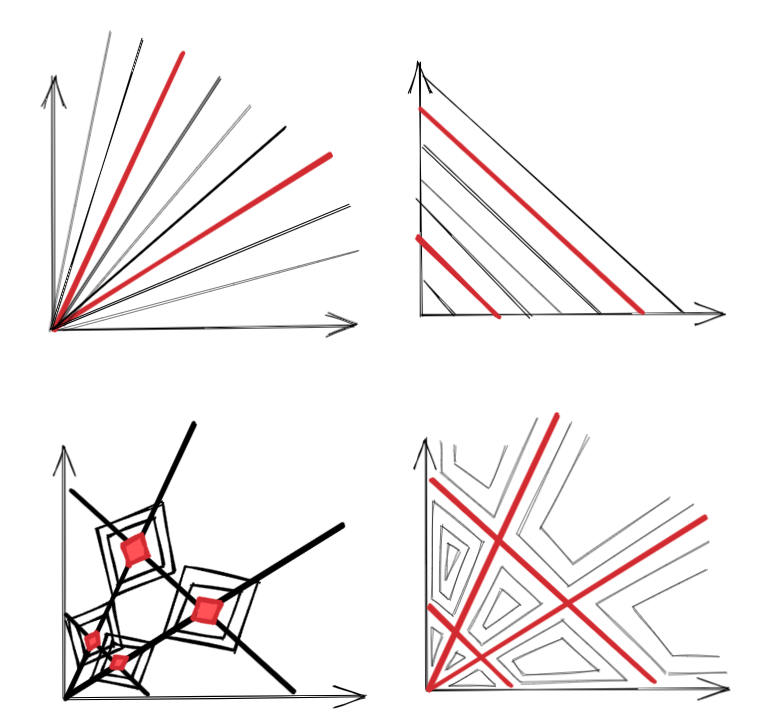
From top-left clockwise: ; ; ; .
[...]
In a Bayesian learning process, the relevant singularity becomes progressively simpler with more data. In general, learning processes involve trading off a more accurate fit against "regularizing" singularities. Based on Figure 7.6 in [1].
What's going on here? Are you claiming that you get better generalization if you have a large complexity gap between the local singularities you start out with and the local singularities you end up with?
But ReLU networks are not analytic. Idk man, seems unimportant.
But smoothness is nice.
There's speculation that we might be able to transfer the machinery of the renormalization group, a set of techniques and ideas developed in physics to deal with critical phenomena and scaling, to understand phase transitions in learning machines, and ultimately to compute the scaling coefficients from first principles.
I thought the orginal scaling laws paper was based on techniques from statistical mechanics? Anyway, that does sound exciting. Do you know if anyone has a plausible model for the Chinchilla scaling laws? Also, I'd like to see if anyone has tried predicting scaling laws for systems with active learning.
What's going on here? Are you claiming that you get better generalization if you have a large complexity gap between the local singularities you start out with and the local singularities you end up with?
The claim behind figure 7.6 in Watanabe is more conjectural than much of the rest of the book, but the basic point is that adding new samples changes the geometry of your loss landscape. ( is different for each .) As you add more samples the free-energy-minimizing tradeoff starts favoring a more accurate fit and a smaller singularity. This would lead to progressively more complex functions (which seems to match up to observations for SGD).
But smoothness is nice.
Smoothness is nice, but hey we use swishes anyway.
I thought the original scaling laws paper was based on techniques from statistical mechanics? Anyway, that does sound exciting. Do you know if anyone has a plausible model for the Chinchilla scaling laws? Also, I'd like to see if anyone has tried predicting scaling laws for systems with active learning.
The scaling analysis borrows from the empirical side. In terms of predicting the actual coefficients behind these curves, we're still in the dark. Well, mostly. (There are some ideas.)
I may have given the sense that this scaling-laws program is farther along than it actually is. As far as I know, we're not there yet with Chinchilla, active learning, etc.
Curated and popular this week
